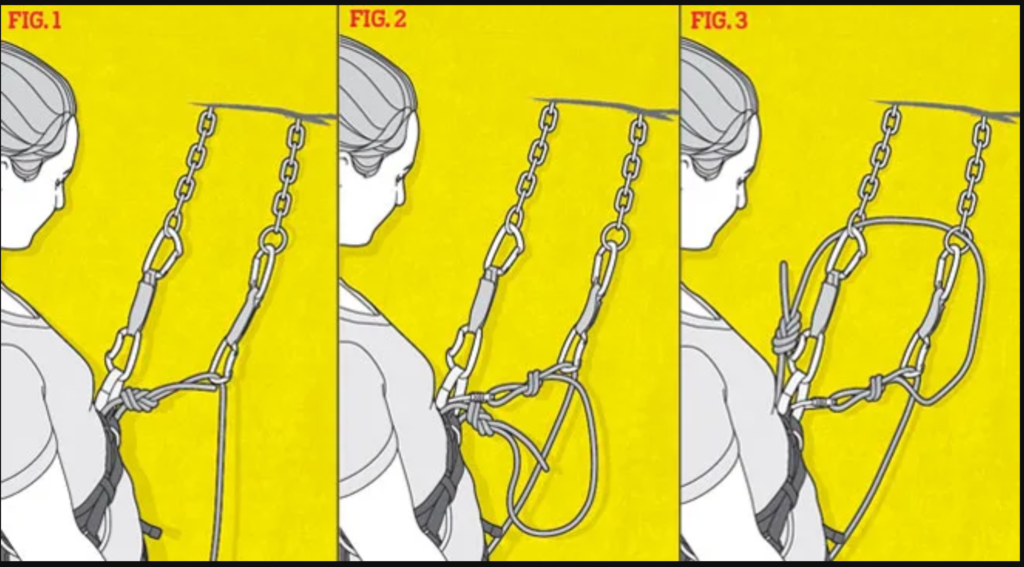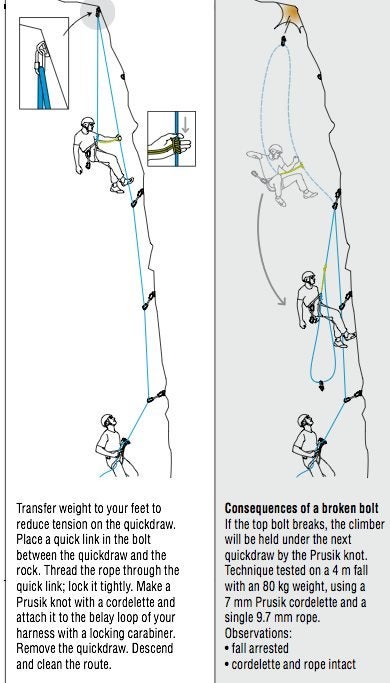Before last year, I hadn't logged an outdoor ascent on thecrag.com since 2016. When you first discover climbing and get obsessed, it can be impossible to imagine that obsession ever fading. Unfortunately life goes on, and things must change - friends can move away, and a career or new sport can suck you in. But after a few years off to race bikes, my spark for outdoor climbing has flared up again. Also, it turns out I'm terrible at racing bikes. So, once again I've been dreaming about climbing.
I've had the strange realization that "I've forgotten more about X than you know" is an actual emotion you can have. I once aid-climbed a wall over two days. This must have involved a humungous rack of aid stuff, hundreds of gear placements, hauling, and setting up a porta-ledge. I have absolutely no memory of how we did any of that, or even where half the gear came from. Nuts go in the crack with the wide bit at the top I think?
Reaching out to some old partners in the Blue Mountains, it was kind of like this.
So I'm in the position of being a beginner again. It's actually really great. I still have a few sneaky tricks, but people have come up with some good new ones in the last decade. You have to stay fresh, you know.
Safely re-threading a two-bolt anchor with a single tether
A while ago people used to commonly use aid-climbing "daisy chain" slings to clip in hard to the anchor. This had a few safety drawbacks due to the particular nature of the sewn loops, and finally seems to have disappeared. "PAS" chain-link slings were invented, and then the newer Petzl adjustable tether things. And tying up a Purcell prusik or caver-style cow's tail has been a dark horse option for a long time. These are all great, but a question that never quite gets answered is, if there's two bolts, how do you clip in to both of them with one tether?
What I used to do a lot was just clip into both bolts with a bunch of quickdraws - often two for each bolt, clipped together metal-on-metal. Yeah, not great. So I've been really happy to discover this method, that requires only two quickdraws and a single locker. I love it.
To add another anchor-cleaning trick, you know how bloody unnerving it is to clean the anchor after you've top-rope seconded a route (which is good plan for cleaning some extremely steep routes), and cleaned all the draws on the way up, and now the rope is free-hanging in space a million miles to the ground? Well, if you leave the last quickdraw in place, and re-clip it to the belay side of the top-rope instead of the climber side, you have a nice heartwarming little backup.
Load strand orientation in the figure 8 knot
This COMPLETELY BLEW MY MIND. It turns out that the way you re-thread a figure 8 knot has a massive difference in how easy it is to untie, as there are two symmetry variants that behave very differently under load. Completely by luck, I have always been tying the superior variation. I learned to "always start the rethread through the 'little gap' in the figure 8" and it turns out that has a much bigger benefit than simply making a neat knot.
Girth-hitched masterpoints for anchors
Try using a girth hitch at the masterpoint. A clove hitch can work too. This is quite a cool innovation, and has some nice aspects. It's more "redundant" than you'd think, much better than a sliding X, and easier to break down than a big overhand. Though, Ryan Jenks showed that it slips at 4kn. That's still probably good enough in practice.
I think as well, skinny slings are used a lot more now, and they don't knot very well or at all, so the girth hitch is more suitable. Where as, it used to be that thick 2cm plain nylon tape slings were used a lot more - you could knot these, and then actually undo them. I still like a 120cm sewn nylon sling for use as a tether when abseiling. Old habit.
Worthwhile bowline knot variants
So this guy from far north Queensland went off the deep end investigating the bowline and practically wrote a thesis on them called "Bowline Analysis", found on this page. But this is maybe a more approachable article. The conclusion is that a new variant he thought out called the "End-bound single bowline" has the best properties. It's a fantastic knot, one for rigging connoisseurs.
Adam Ondra infamously ties in with a single bowline, backed up with a stopper knot on the bight. He climbed El Cap with that thing. I have come to believe that single bowlines and their variants are superior, and harder to mis-tie, than double bowlines. I learned to tie a single bowline (for sailing) by starting with an overhand knot and inverting it to produce the loop, which is fast and reliable. I can literally tie a single bowline this way blindfolded with one hand - I tried this! I can't get close to that with a double bowline or figure 8.
The other bowline variant that a lot of people use in practice, is the rethreaded bowline-on-a-bight. This knot is distinctive because it has two loops, both of which go through your tie-in points. It won't unravel, more or less because there's just so much rope used up in the knot. The German alpine club (the DAV), a lighthouse of something approaching science in climbing techniques, recommends this variant. Stefano Ghisolfi uses it too e.g. see in this video or in this video at 4m 58s, you can see the double loop of rope through his harness points. Mike Law also uses this knot. But, I reckon the EBSB could gain prominence in the long run.
I'm not linking directly to how-tos for these knots, as anyone thinking about using a bowline tie-in needs to self-educate and take responsibility for themselves. But if you're looking to learn some, perhaps just to be able to inspect them if you climb with someone who does use a bowline, I think the Ondra-style single bowline, rethreaded bowline-on-a-bight, and potentially the EBSB are the best ones to learn.
Safer bailing off of a sport route
Ah, the lower-off from the single bolt of shame. It happens. That stash of cheap, hook-nose carabiners from my first set of quickdraws comes in handy sometimes.
Of course, if you're relying on a single carabiner, it really really should be a locking one. People think about the scenario of a "bolt breaking" but far more likely is a kink or jerk in the rope flicking the carabiner gate open and causing it to jump out of a non-locking carabiner. If you want to be a slightly safer cheapskate, trying taping the gate shut of your non-locking bail biner! It can't hurt! This is Sketchy Andy levels of "genius".
However if you have a prusik somewhere in the bottom of the pack because you're Miss Prepared, you can tie it into the belay side of the rope and tram with it (slide it down with you) as you're lowered. This is a clever method.
Lowering your second while belaying in guide mode
So I always feared the prospect of actually having to do this. Forcing open a locked belay device in guide mode is really sketchy. A guy got really messed up on Sweet Dreams, of all routes, because he got dropped while seconding. It's supposed to be the safest belay method for goodness sakes! There was never really a proper recommended method that was taught to do this, but people seemed to have worked out better ways recently.
Of course these days I'm a member of the "GriGris For Multipitch" club, which makes lowering or hauling the second much easier, if you're using a single rope. And I think grigris are just fine for trad climbing - in fact I think claims that grigris are "bad for trad climbing" and "can't be used for abseiling" "put more load on gear" are the height of Trad Wanking, when they've been the standard for big wall climbing since the 90s. It's like the number 1 gear recommendation in How To Climb Big Walls! They don't seem to have any problems being used catching falls on copperheads and beaks and such on El Cap, and rappelling thousands of meters, day after day. I hate to keep using El Cap as an argument, but it's a pretty good argument! Grigris aren't a problem, it's badly-trained belayers, and experienced-but-complacent belayers, who are a problem.
Sorry, sorry. Sore spot there. Anyway, back to guide-mode tube devices. There's this thing called the load-strand redirect, or LSD Method.
Basically the idea is to secure the belay strand with a prusik, clip a carabiner or draw into the anchor shelf or a high anchor component, then clip the climber's rope strand into that, flipping open the blocked device. Cool. Personally I actually think tying a Munter-Mule hitch on a locker on your belay loop might be easier and quicker. And in that case, you might not actually need the LSD and you could just pull the device open with a sling - hmmm, something to test out on the ground some time.
Conclusion
Climbing is just not something you can ever take lightly, really (gravity, unfortunately, doesn't know how long you've been climbing for, or how nice a person you are). After a few years of experience, complacency is arguably the biggest risk. You just have to be humble and keep trying to learn.






